
|   |

|   |
 e-mail: leelakaverivenkat@gmail.com Contemporary dance expressions beckon April 7, 2017 Costume designer Sandhya Raman's studio in Ladu Serai, became the venue for an informal and unusual evening of Collisions, comprising movement exploration in contemporary dance, substantiated by a dialogue involving three reputed people in the dance world - Shirley Mordine from the United States, Bharatanatyam dancer Hema Rajagopalan settled in the United States - and Indian Contemporary dancer Astad Deboo, the third participant in this triangle. Interestingly, Shirley who has worked with Bharatanatyam dancers and collaborated with Hema in a few of Hema's earlier productions, is unique in being drawn to the expressional aspect of Bharatanatyam - which dancers , specially contemporary dancers in the west, are least drawn to. Collision (of which this is the second interaction) contrary to the generally understood connotation of the term referring to colliding forces, refers to varying cultural expressions coming together in interactions that enrich. Hema Rajagopalan called her work Sahridaya (meaning empathetic), which perhaps expresses for the Indian mind, the idea behind this effort better. 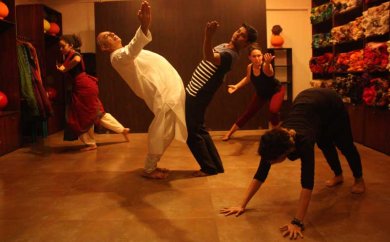
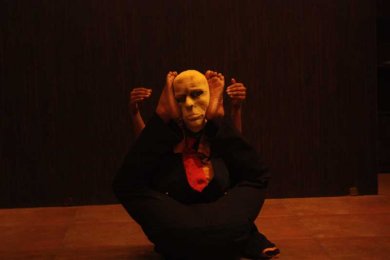
The performance part of the evening featured short individual projections by the participating students. Asha Rowland's presentation of Sahridaya was based on the Bharatanatyam technique performed to totally modern music in a contemporary statement. Western Contemporary dancer Melissa Pillarella from Israel presented a piece titled In the beginning (inspired by the child looking in fascination at its own hands) conveying impressions of body beginning to know itself exploring movement. Jahnavi Saisuresh, a Bharatanatyam dancer who went through Contemporary Dance training in an institution in the west, presented a unique coming together of the clear cut geometry of Bharatanatyam lines followed by the fluid curves and curls her torso went into - in a complementing body language of opposites. This critic was very impressed by the disciple of Salam Balak Trust, Shamsul, trained by Astad Deboo - the youngster showing himself as a thinking artist with clarity of purpose and ability to do his own work. With a puppet he himself had designed held in front of his face, Shamsul very cleverly made his hands from the back speak for it, his own face also appearing at the side after a while. The concluding part of the demonstrations saw all the young participants together, obeying Astad's instructions on moving, freezing, pairing or going separate, and it was wonderful to see how the very different movement styles shared performance space in a very congenial and visually intriguing manner. As Shirley observed, the entire effort was still at the stage of breaking ice, with the participants getting to know one another and interacting through their individual body techniques. Sense of group spacing was good. It is exciting to think of the kind of finished project that could eventually emerge from this group of young enthusiasts guided by the experienced teacher/choreographers. International Contemporary Dance Festival by Teamwork Fine Arts Society Mounted by Teamwork Fine Arts Society at the Shri Ram Centre auditorium, and curated by ardent votary of Contemporary Dance, Dr. Suresh Goel, the second consecutive celebration of Expressions, an International Contemporary Dance Festival, underlined the fact that it is not so much the technique, as the approach to the art form by the performer that really defines Contemporary Dance. Totally free in its mode of expression, Contemporary Dance comprises a personalized, individualistic approach, its movement vocabulary and ideas transcending boundaries of region, nation, or culture specificity. Many Indian Contemporary dancers as specialists whose base technique is acquired through training for years in a classical form, practice ways of getting out of strait- jacketed, prescribed grammar of specific types of movement, expressions and music, going beyond the boundaries of their art form to express themselves in different unique ways. In the rather warm lobby of SRC, Rukmini moderated a brief prelude of observations by a few contemporary dancers, art interested bureaucrats like Jawahar Sircar, dance impresarios, and activists, on the why of Contemporary Dance. One had no quarrel with any opinions expressed barring the one suggesting that since our rich five thousand (!) year old classical dance forms with their richness were still not part of the international performance art circuit, except as fringe art presentations, it was thought necessary to see if the same classical dances could shed the traditional repertoire, and be extended to provide really contemporary expressions, attracting larger audiences across the world - especially in the west. This approach shows a complex of having to live up to the Joneses. So what if some persons do not respond to our traditional dances? Is that reason to try and change our art to what they want? Change (and one had to laud what was presented by the Indian classical dance specialists) should be prompted by an inner urge and conviction - not a desire to earn plaudits from the world. Contemporary creations should ideally stem from a more convincing argument base than being undertaken to please a western audience. Does the world change the identity of Ballet to cater to Indian responses? Slide show Photos: Avinash Pasricha 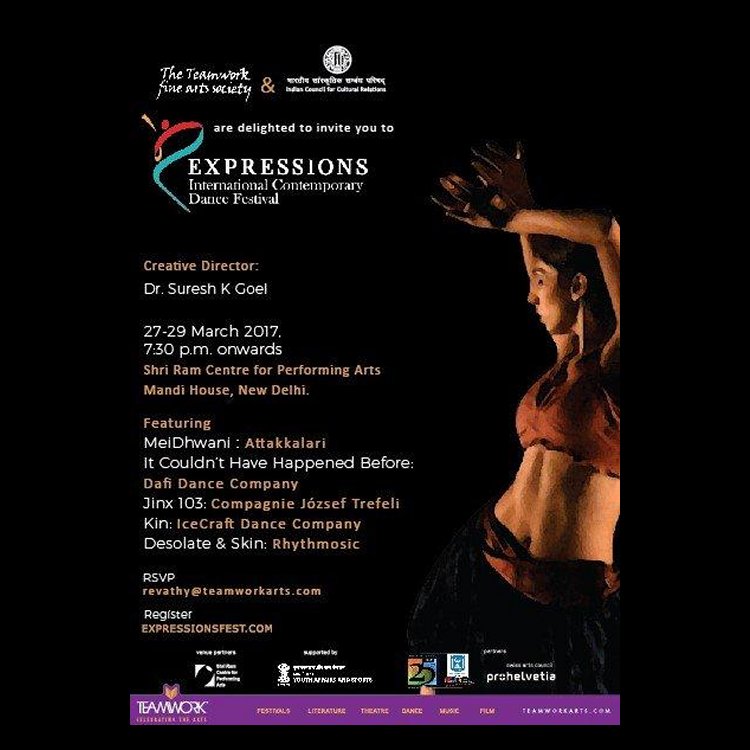
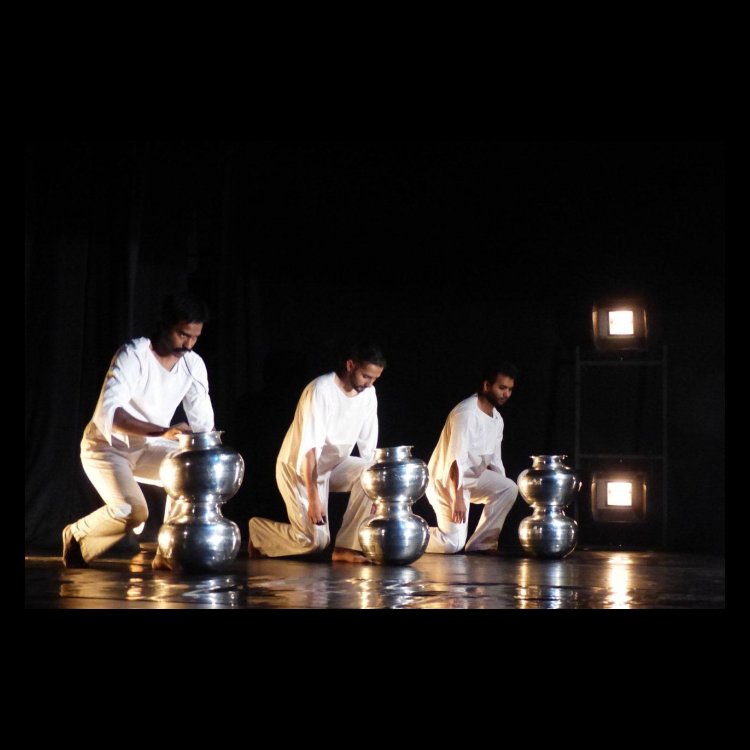
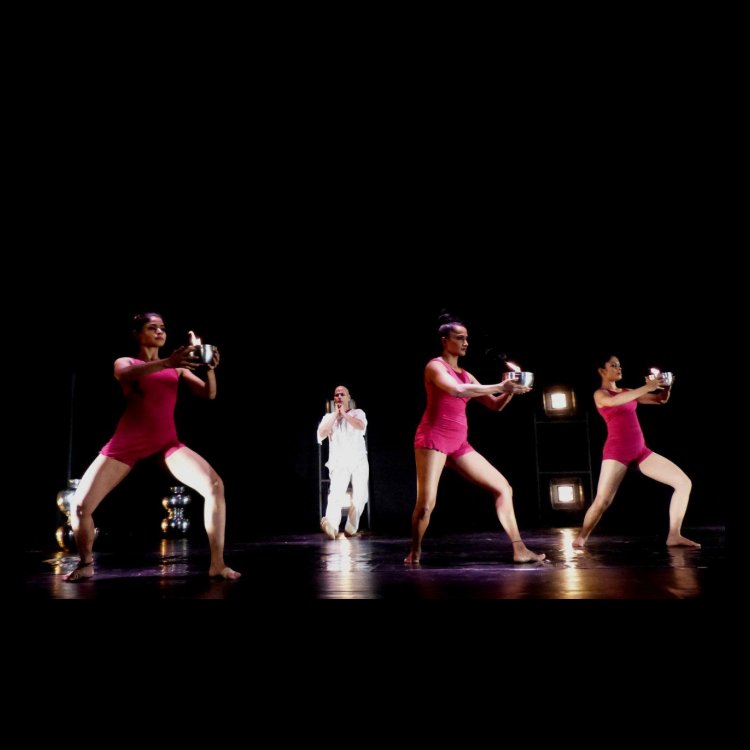
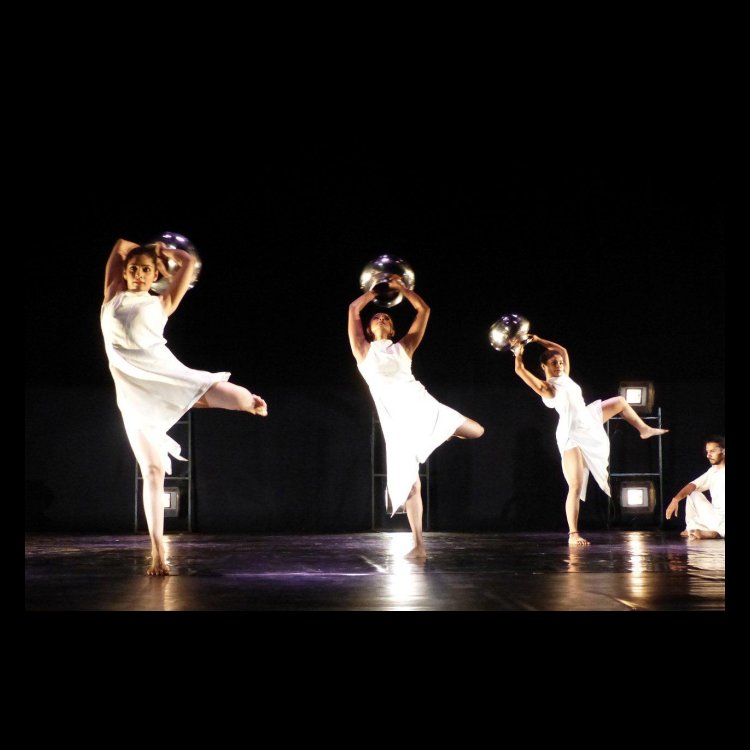
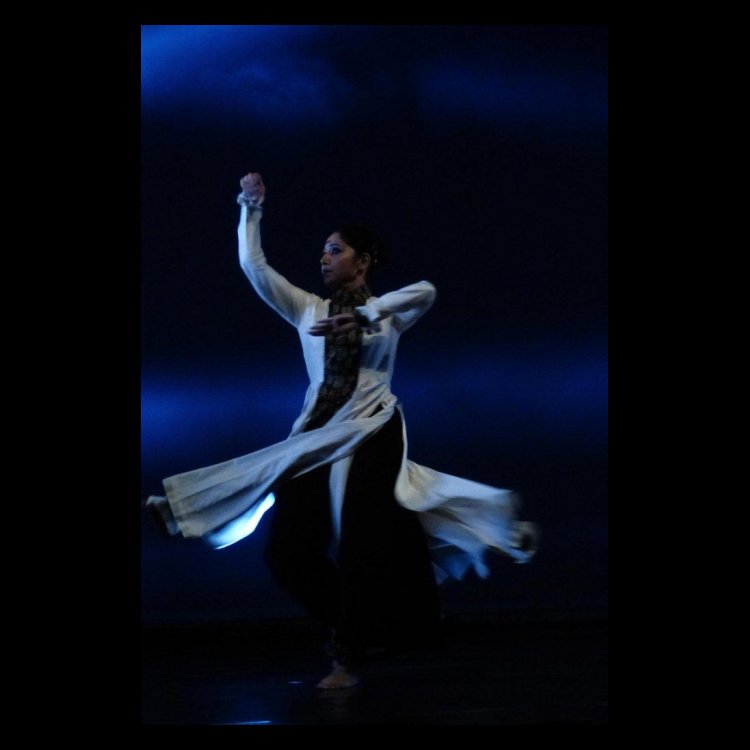
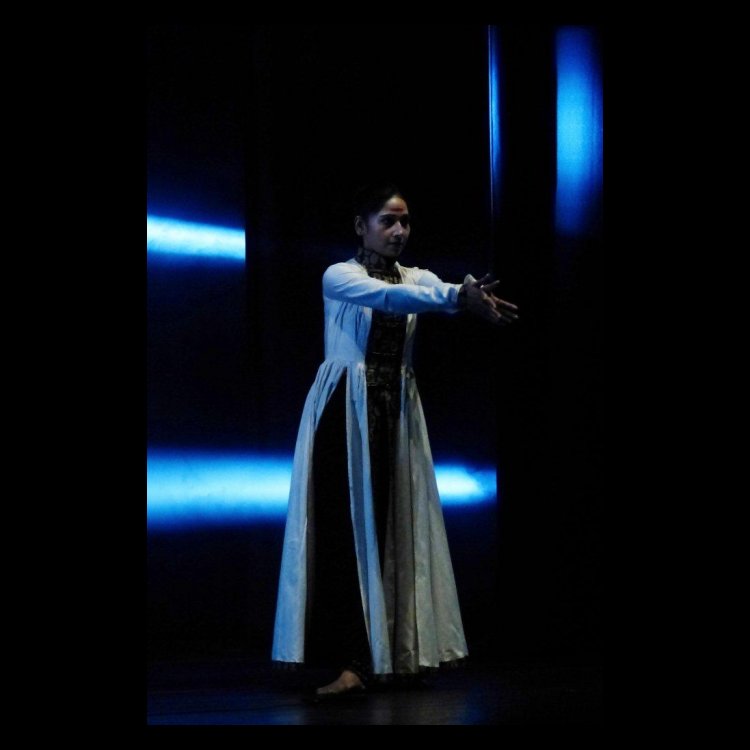
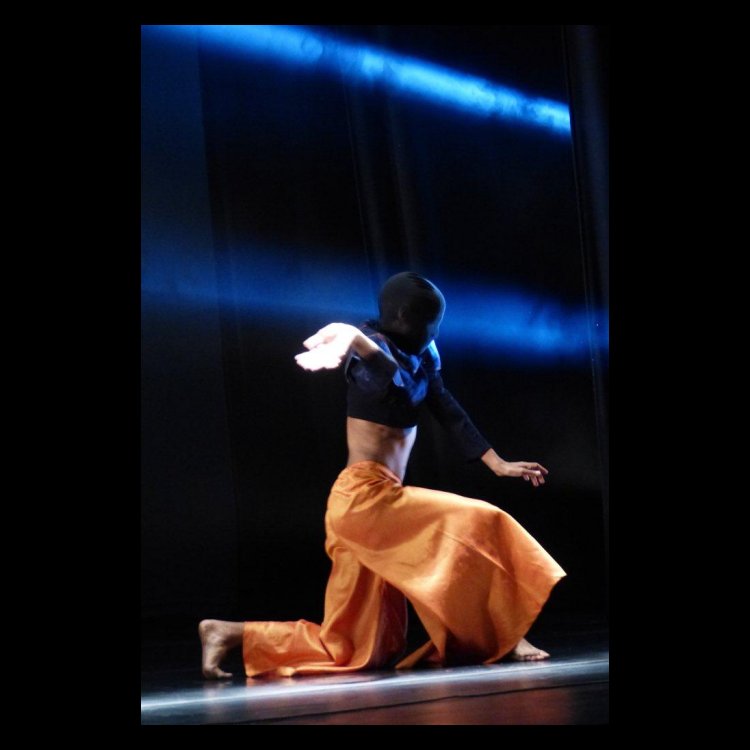
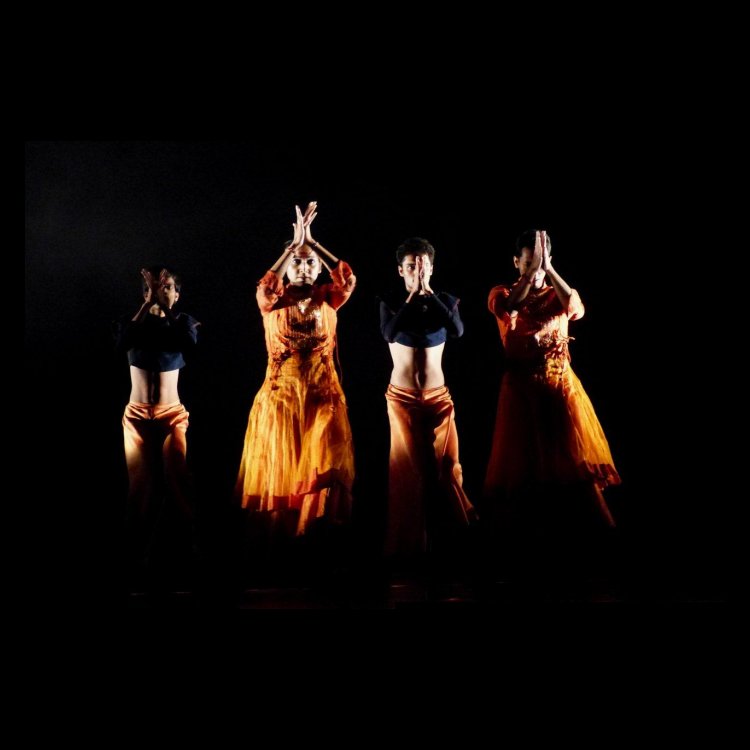
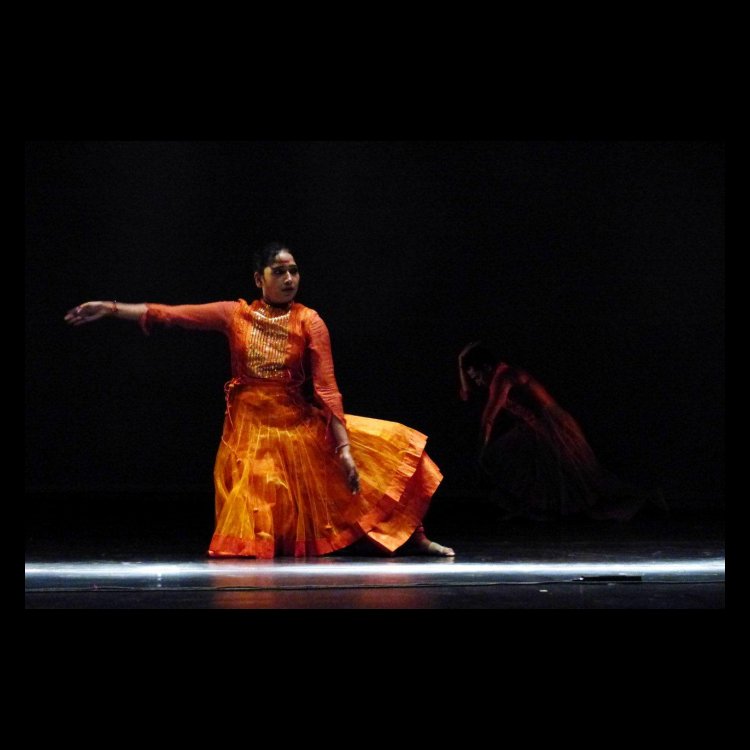
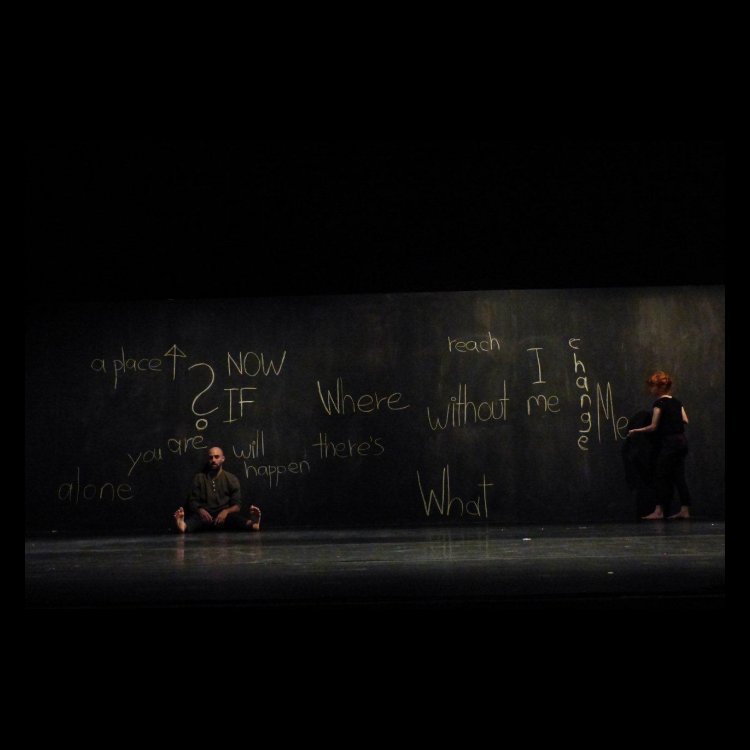
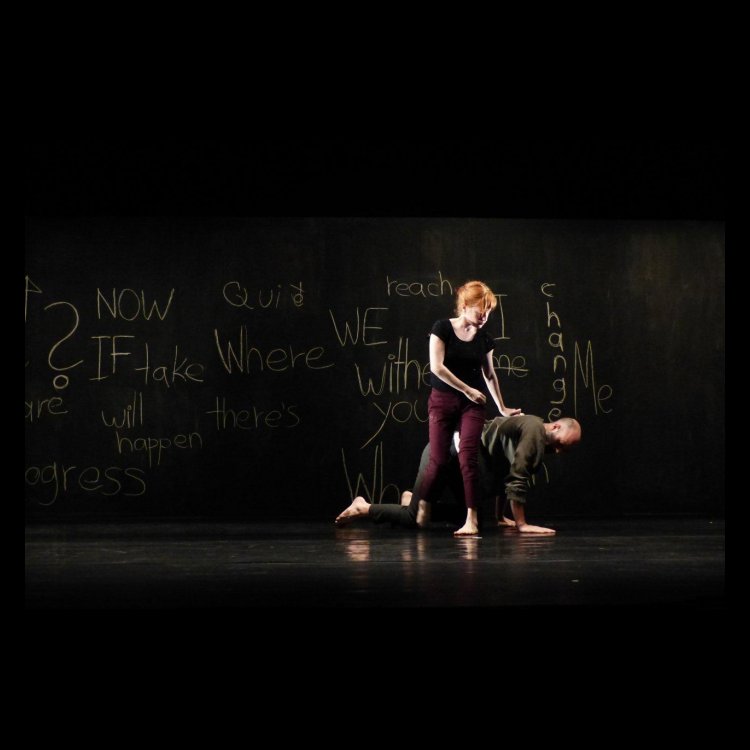
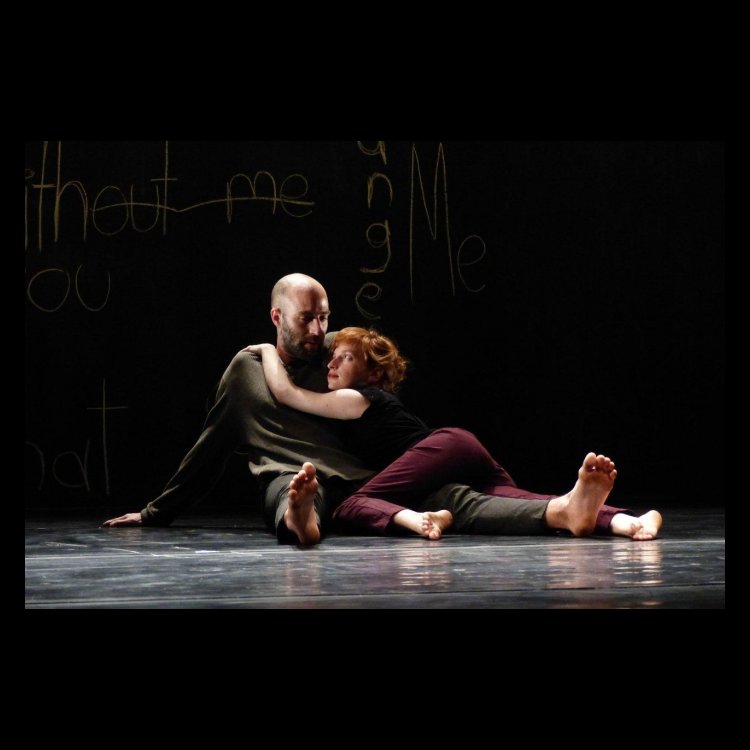
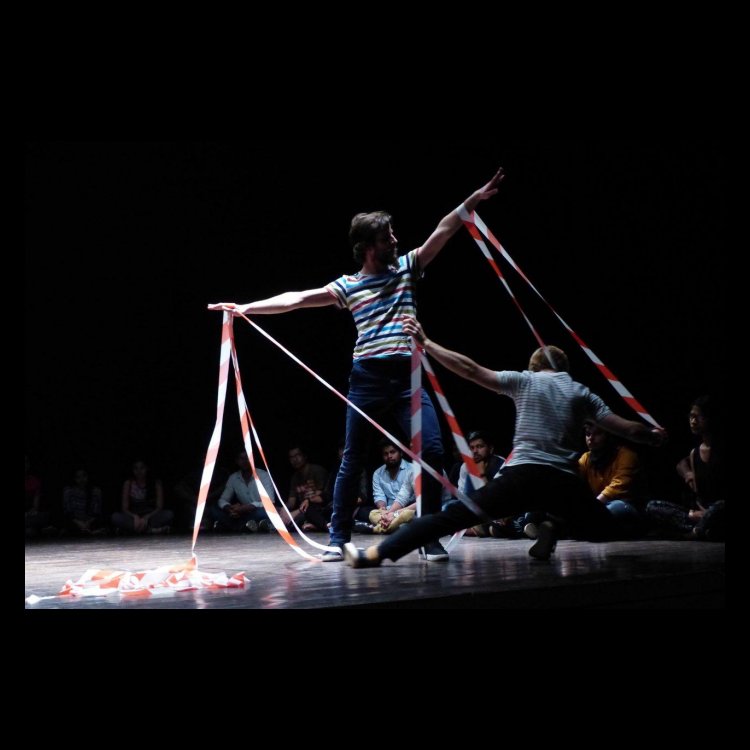
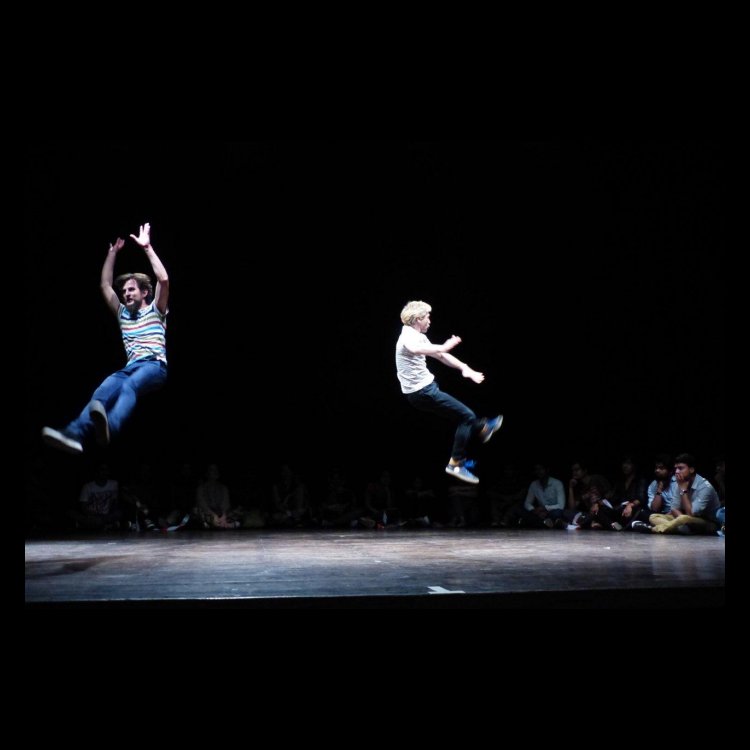
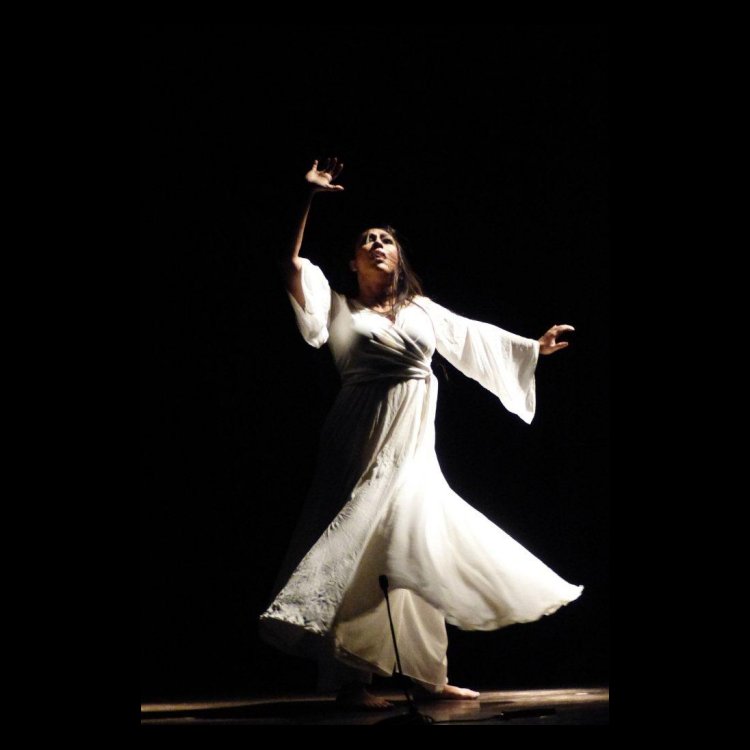 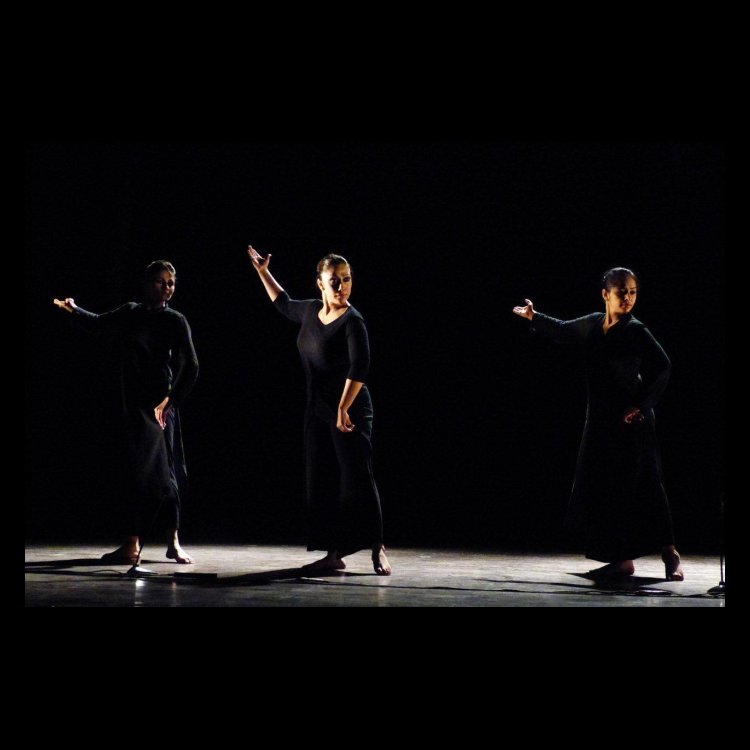
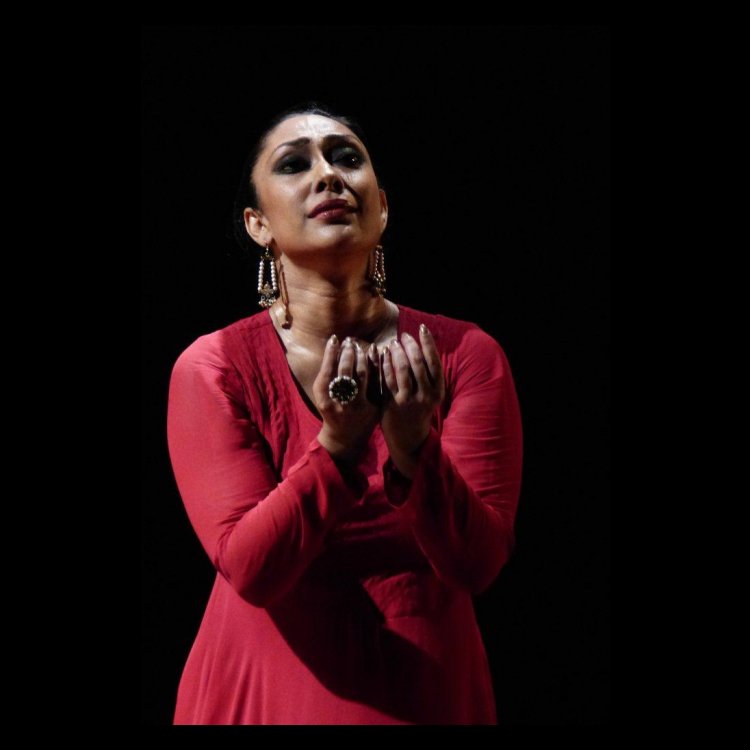
Attakkalari's presentation in its coupling of Tamil and Sanskrit in the title of its production Meidhwani was a pointer to the way its body language draws on Bharatanatyam, Kalaripayattu, Kathakali , Tai Chi, Ballet and what have you - the flow in harnessing such a wide vocabulary with all these techniques coming from its artistic director Jayachandran Palazhy's training in London at the Contemporary Dance School. Full of symbolism, the production aims at capturing the fragility of solitude as contrasted with the chaos and hyper activity of turmoil. The symbolism shows body and its connection with the elements - the metal pots as metaphor for water representing feminine infinity - the graceful female dancers moving in (body language stemming from Bharatanatyam) constant relationship with the metal pot they carry - their movements with, over, even (with feet planted) inside, the pot. This is contrasted with the fire burning in the cylindrical oil lamps, representing tempestuous and destructive male energy visualized in the strong animal motifs rendered by male artists using Kalaripayattu abstractions. Earth and Sky are symbolized in floor movement sequences contrasting with aerial leaps. Amidst polarities one is constantly trying to find the perfect body/mind harmony. There are sequences resembling a ritual - with burning lamps in hand and in Jayachandran's solo interventions, movement seems to connect earth and sky in a kind of total silence. Music and sound by Patrick Sebag and Yotam AgaM (Earth Sync) (Israel and India) and Thomas Dotzler's light design provide the suitable accompaniment. But for this critic, after the first forty minutes, despite the well trained and aesthetically costumed finished dancers, movement became overly repetitive and while scene after scene followed with dancers appearing in twosomes, group, even solo, it seemed as if Jayachandran Palazhy had run out of ideas. Compagnie Jozsef Trefeli, Switzerland, presented a fun filled Jinx 103, the two dancers Jozsef Trefeli and Gabor Varga, part of the Hungarian Diaspora (one from Australia and the other from former USSR) in a racy partnership created a kind of body percussion- with rhythm produced by slapping parts of the body, clicking fingers, stamping in a "peir ka kaam'" Kathak fashion (though with shoes) with Frederique Jarabo's music adding the right touch - particularly the peppy music on the violin which had a folksy air and which made hearts in the audience beat and dance with the rhythm of the dancers. With the audience squatting on the ground on the stage space itself, it was very intimate theatre that was created and the performers kept up that air of total informality. At times movements were totally synchronized and at others, it was as if the rhythmic cycle being played on the percussion saw improvisational rhythmic fillers provided by the dancing feet. Ahmedabad's Icecraft Dance Company working on providing Kathak with a contemporary face, has Kumudini Lakhia's prime disciple Sanjukta Sinha, a combination of virtuosic skill and arresting stage presence as its main dancer. Characterizing the woman in different moods, Sanjukta in Illumine was the eternal seeker, looking for that oneness with a force greater than all mankind. Choreographed by Miriam Peretz, Illumine starts with Fabiana Piccooli's light softly profiling the figure of Sanjukta, absolutely still, in a flowing white gown, hair loose. Like a figure stepping out of a painting, she slowly begins to move with graceful hand movements. She is following the light and seeing the colours of the rainbow. But what she seeks is the white of stillness and of complete connect with the divine. The haunting quality of the music by Bernhard Schimpelsberger adds to the tone with the dance contrasted by stillness and movement -- ending with immaculate twirls - the visual aesthetics having the lower part of the gown swirling in three frilled layers. The ethereal tone is contrasted in the next Id where the darker inner energies of subconscious woman are represented in black clad figures of first two and then three dancers, with pataka hands chopping the air in sharp impulsive movements. The precise chakkars, and the taut hand movements along with the music seem to question the performer - Who am I really? It is like "floating in a dark ripple-less pool". Clad in a red costume, and oozing sensuous charm through the Kathak idiom that she is so at home with, Incede choreographed by her guru Kumudini Lakhia saw Sanjukta in all her virtuosic fullness and strength - from That to Gat-nikas to Paran to the abhinaya for "Shyambin vyaakul nain, Kaise kate more din." While this conclusion certainly shows her in all her technical strength and agility in the classical idiom, in a Contemporary Dance festival, it perhaps becomes necessary to find moments away from traditional presentation methods, to fit into the parameters of this kind of festival - for despite the typically different touches of Kumudini Lakhia's creative vision, the item seems too close to Kathak as known, for comfort. Dafi Dance Company from Israel in It couldn't have happened before presented one of the festival highlights. Dafi Altabeb's choreography harnessed body movement in a manner that became a metaphor for a nation having to live on edge with restrictions amidst constant attacks and problems struggling to find normalcy amidst turmoil. Here two people try to find love and togetherness amidst a difficult world outside. On a huge black board which provides the backdrop for the performance space, the young girl scribbles words on the board like I, Me, We, together - adding up to a stream of consciousness. The two dancers Naga Golan and Adi Elzam, also co-creators of the production, tangle together in moves that seem a constant tussle - seeming to attract and repel, in love and rejection - yet in a way where the two figures are always in touch with each other through thick and thin - ultimately through struggles, the two find togetherness. The demanding body language required enormous powers of balance and mental/physical concentration, finally arriving at an acknowledgement of their forming a twosome. This certainly could not have happened before. Rhythmosaic Sengupta Dance Company from Kolkata has earned a name for its contemporary expressions taking off from Kathak which forms Mitul Sengupta's base style. Desolate, depicting the sorry plight of those who live on the fringes of society like the transgender was inspired by the story of Aravan from the Mahabharata. Offering to sacrifice oneself in the Kurukshetra war, the character wanting to experience all the joys of life before dying, finds that there are no takers for a transgender. Conceived by Shambik and Mitul Sengupta, the gesture of letting off the arrow very clearly articulated the character at the start. Kathak movements with chakkar and foot work with floor level contemporary movements drawn from their mixed training in Kathak, Classical Jazz, Ballet and Contemporary Dance made for varied movements. Costumes with Mitul wearing a skirt and pant, and Prasannor Saikia and Shambik Ghose in their sleeveless blouse tops and skirts, specified the transgender with actions like hand claps, very much a part of the expression of such people. The next work Skin also showed that the choreographer Shambik is drawn to themes springing from societal prejudices. Caste, creed, and just the skin tone brands people in society. Life is full of instances which force roles on people. Thus bodies switching from Contemporary body language to Kathak, act as metaphors for the difference between putting on something and then being oneself which is very different. In snatches of Kathak and expressional gestures, the compulsive stage presence of Mitul with her finished movements and communicating skills, stood out. It is amazing how Contemporary Dance has become the flavour of dance - for the young, in particular - attracting large audiences.  Writing on the dance scene for the last forty years, Leela Venkataraman's incisive comments on performances of all dance forms, participation in dance discussions both in India and abroad, and as a regular contributor to Hindu Friday Review, journals like Sruti and Nartanam, makes her voice respected for its balanced critiquing. She is the author of several books like Indian Classical dance: Tradition in Transition, Classical Dance in India and Indian Classical dance: The Renaissance and Beyond. Post your comments Please provide your name and email id when you use the Anonymous profile in the blog to post a comment. All appropriate comments posted with name & email id in the blog will also be featured in the site. |